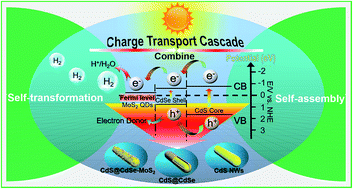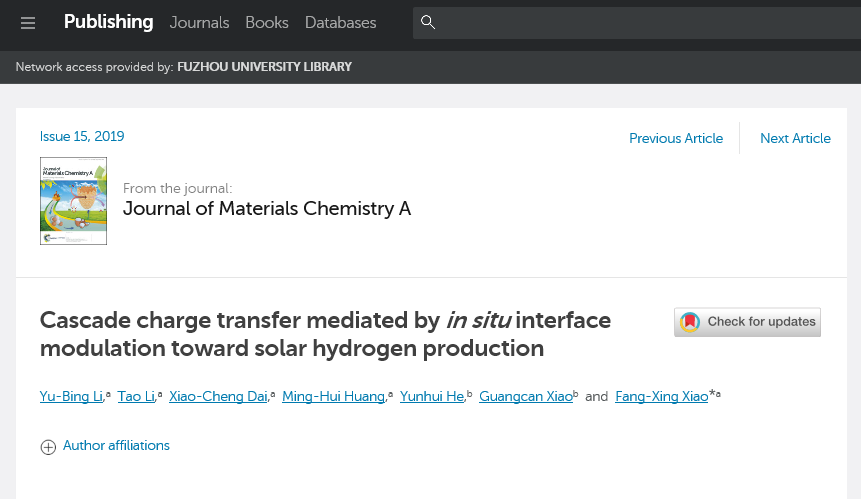Recently, Prof. Fang-Xing Xiao' s group at College of Materials Science and Engineering of Fuzhou University published a research article entitled “Cascade charge transfer mediated by in situ interface modulation toward solar hydrogen production”in Journal of Materials Chemistry A.
Exquisite modulation of spatial charge transfer has been deemed an efficacious strategy to boost the solar conversion efficiency. Nevertheless, tunable control over directional charge transfer in photocatalysis to ideal reaction sites still constitutes a challenging task. In this work, cadmium sulfide (CdS), one of the most quintessential transition metal sulfides, was used to demonstrate how to progressively construct a cascade charge transfer channel via in situ phase self-transformation coupled with favorable interface engineering. The in situ phase self-transformation of CdS to CdSe on the surface was triggered followed by electrostatic self-assembly of MoS2 quantum dots (QDs) on the CdS@CdSe core–shell nanostructure, resulting in a CdS@CdSe-MoS2 QD ternary heterostructure with well-defined tailor-made interfaces. Significantly, CdS@CdSe-MoS2 QDs demonstrated conspicuously enhanced photocatalytic water splitting performance in comparison with their single and binary counterparts under visible light irradiation along with favorable photostability and substantial apparent quantum yield. This is predominantly ascribed to the generation of a cascade charge transport channel in the ternary heterostructure arising from the cooperativity of in situ CdSe encapsulation and pinpoint MoS2 QD decoration. More importantly, the in situ formed ultrathin CdSe interlayer plays a crucial role in mediating the charge transfer cascade, affording suitable energy level alignment, and shielding the defect sites of CdS NWs, thereby markedly retarding charge recombination and prolonging the lifetime of charge carriers. Furthermore, self-assembled MoS2 QDs on the CdS@CdSe core–shell framework further contribute to the directional charge flow to the active sites for hydrogen production.


Link: https://pubs.rsc.org/en/content/articlelanding/2019/TA/C9TA01144G#!divAbstract